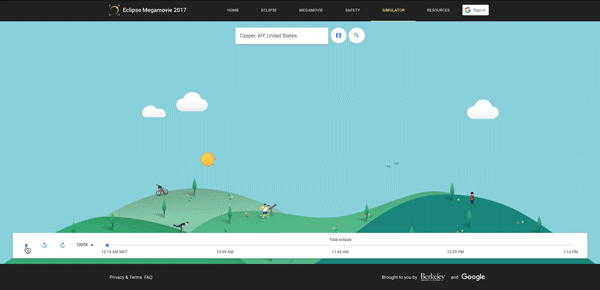On August 21, North America will see its first total solar eclipse in nearly 40 years. You'll be able to see the partial effect from Denver, but the path of the true, total eclipse is surprisingly narrow -- just 60 miles wide.
Luckily, that path runs just a little bit to our north. And with the help of Google and UC-Berkeley, we can give you a cute little preview of what you'll see in Denver and in better spots.
Update, Aug. 21: Find more local information and events for the eclipse here.
First, the path of the eclipse:
Courtesy of NASA, here's where you'll find the darkness and the darker darkness.

What will happen in Denver:

This animation, presented with permission, shows the eclipse at super-speed over about three hours. The moon will start to creep in front of the sun around 10:40 a.m. and the eclipse will peak at about 11:41 a.m.
However, since we're out of the true path, we won't experience the full eclipse. We'll do better than a lot of the country -- Albuquerque, for example, will only get a 75-percent eclipse. Still, you'll need to wear special glasses to safely watch from Denver.
What will happen in Casper:

A drive of just 278 miles will take you from downtown Denver to Casper, Wyoming, one of several towns at the heart of the eclipse path. As you can see below, the general phenomenon looks pretty similar and lasts about the same time.
But in those few minutes of fullest eclipse, you'll see total darkness -- which is the only time you can ever look safely toward the sun, according to NASA.
I'll note that these animations are playing a bit faster than they should -- so, go play with the simulator yourself.
Our suggestions for seeing it:
Earlier this year, I compiled a list of four road trips for prime eclipse viewing. Just keep in mind that some of the coolest spots -- like Carhenge -- are likely to be completely mobbed, and I'm not sure if I want to stand in total darkness with thousands of strangers.












